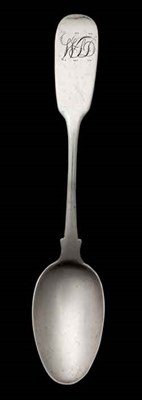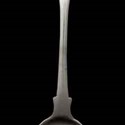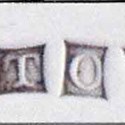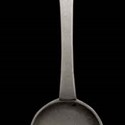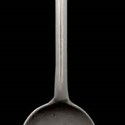The 376-lot ensemble offered on the first day of their sale on January 27-29, put together over the course of more than half a century by one dedicated collector, was devoted entirely to Scottish spoons and, furthermore, to examples by the rarer Scottish provincial centres (Edinburgh and Glasgow were largely eschewed).
As Mr Butcher explained in the catalogue introduction, the interesting aspect of this particular collecting field is the sheer variety of marks available. It can be likened to stamp collecting, with some of the centres (Aberdeen) producing quite a large number of silversmiths over a long period, while pieces from Stonehaven (with only one silversmith working during the mid 19th century) are extremely scarce and valuable - "the silver equivalent of the Prussian Blue".
Sensibly then, in a field where values are based less around aesthetics than scarcity, mark quality and mark combinations, Mr Butcher used the philatelic approach with his workmanlike catalogue, arranged alphabetically from Aberdeen to Wick, with each lot and its all-important marks illustrated, condition guides and a grading out of ten.
Collectable Catalogue
This ensemble was probably as comprehensive as you get, so the catalogue will probably also attain collectable status. For the Scottish provincial silver market is collector led by a dedicated group of ardent supporters. They were buying in force alongside specialist dealers acting mostly on commission and Scottish museums.
The volume take-up was 80 per cent, with more in aftersales.
As one might expect, prices followed that rarity scale outlined above, with all the Aberdeen spoons coming in under £1000 (and many under £100), while a single Stonehaven spoon realised £3800. Reassuringly for the market, this was the same price level as another Stonehaven version sold at Lyon and Turnbull in 2008.
The most expensive single entry was a wavy ended initialled tablespoon marked for David Dunlop and for Canongate, a district just outside Edinburgh, with a date letter corresponding to Edinburgh 1703. It realised £4400.
Amongst the institutional buyers were the Tain Museum who secured five of the nine Tain spoons including one by Hugh Ross, c1765 for which they already have the pair, at £1000.

